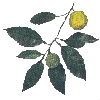Cocoa butter soap making: How to make better soaps with cocoa butter
Cocoa butter for soapmaking? Does it sound odd to you? No, it is not so. Cocoa butter is one of the most stable of natural fats. It is widely used in industrial applications and soapmaking is no exception to this. Cocoa butter has a texture that yields stability to soap. This article will detail on how cocoa butter can be useful in soapmaking.

Why cocoa butter for soapmaking? Soaps are a common need for maintenance of personal hygiene and cleaning of clothes. Soapmaking has been a special art from the ancient times. People have tried making different kinds of soaps at different eras for various purposes. Now the soap industry has come a long way so much so that we have diverse varieties of soaps. Basically made from vegetable and animal fats, the purpose of a soap is to clean well – be it the skin or the cloth. Some soaps lather well, while some don’t. Even beef tallow is used in the making of soaps. Tallow soaps lather very less, but are good detergents. In much the same way, cocoa butter is used in the soapmaking process. It is used to make milder soaps that are soft on the skin. Cocoa butter being a good moisturizer, soaps made with it as an important ingredient, tend to be gentler on the skin.
Cocoa butter and soapmaking: Cocoa butter makes milder soaps made with palm oil, vegetable oil, olive oil, coconut oil, shea butter, hemp oils and several other oils. Since cocoa butter enhances the production of skin collagen, it is used widely in the skincare industry. It replenishes the skin with its natural oils and moisturizing properties, making the skin look healthier and better.
Cocoa butter has the rich scent of chocolate and reduces skin dryness. It also improves elasticity in skin on account of its high Vitamin E and Aloe Vera content. It even treats eczema, dermatitis and stretch marks without any side effects. On account of all these properties, cocoa butter is considered a great ingredient in soapmaking.
To start making soap we basically require:
- 30 Oz’s Olive Oil
- 70 Oz’s Vegetable Shortening
- 4 Oz’s Cocoa Butter
- 12 Oz’s Lye
- 40 Oz’s Cold Water
This combination can be the best for handmade soap which is different from industrial soap because it involves more fat and less chemicals. With added glycerin and extra fat, cocoa butter soaps are naturally moisturizing and pure. These soaps are, in fact, friendlier to the skin than industrial soaps. They give a greasy feel to the skin and yet, are better than industrial soaps.
You can do several variations in cocoa butter soapmaking. Some people combine shea butter and cocoa butter to make soaps. Others use shea butter just as an anointing agent in the soapmaking process. Whatever the ingredients, cocoa butter soap is smooth and gentle on the skin than many of its industrial counterparts. You can add your desired color, fragrance and other additives (if required) to make your soap versatile.
Comments Off on Cocoa butter soap making: How to make better soaps with cocoa butter







